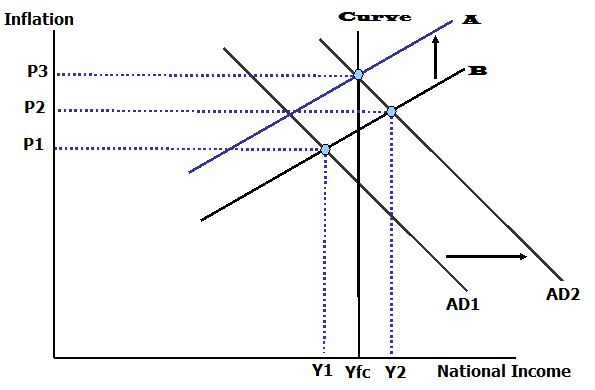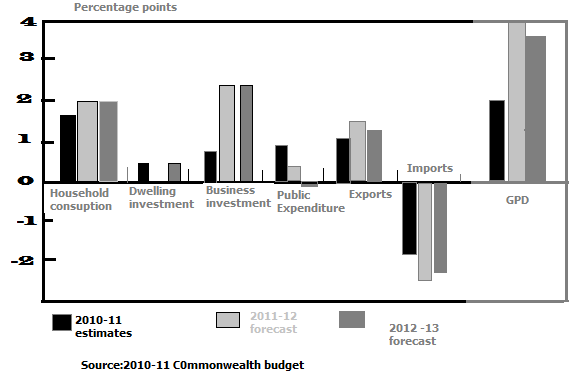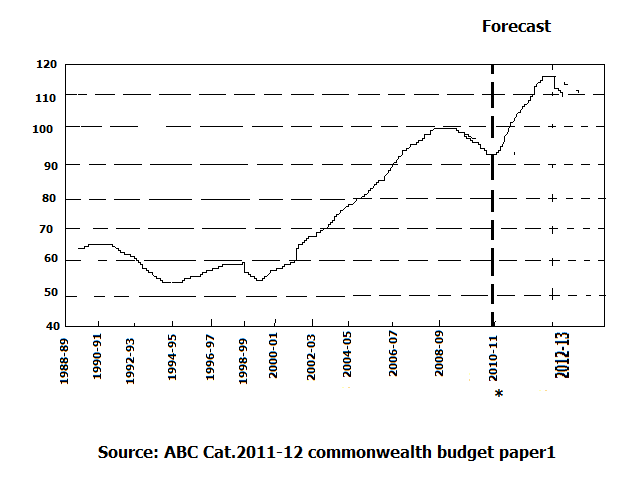What is meant by Fiscal Policy?
Fiscal policy refers to the government’s program for expenditures and responsibility for implementation to spur economic growth. Fiscal policy works together with monetary policy and is both implemented by the Central Bank of the country. Fiscal policy is employed every year by the government to tackle the economic challenges it faces. The monetary impact of any transformation in the regime budget is felt by specific individuals a tax cut for family unit disposable income.
The fiscal policy aims at stimulating the pattern of economic movement, the extent, and growth of aggregate demand, as well as employment. Fiscal policy affects production by touching collective demand and making it a likely tool for economic steadiness. Fiscal policy is assumed to be tight when revenue is greater than expenditure and lose when an expense is greater than revenue (Miller, 2004 p. 94). Fiscal policy routinely affects the demand for goods and services.
Fiscal policy is a significant instrument for managing an economy since it’s capable to impact the overall amount of productivity. Fiscal policy advances the demand for goods and service and this upsurge both output and values of products. At this junction, we will consider how fiscal policy works, and the ways it must be supervised, and how it is putting into practice may affect the different population in an economy. Fiscal policy judgments have a persistent effect on the usual conclusions and behavior of individual families and businesses. The implementation of fiscal policy is unswervingly responsible for the levels of aggregate demand as well as aggregate supply.
What are the instruments of fiscal policy? Evaluate the effectiveness of increasing government spending and tax cuts as a means of stimulating aggregate demand
The instruments of fiscal policy comprise taxation, government spending, and the budget. Budget is the scheme through which the administration allots funds to different sectors and activities. The budget deficit is experienced by the government when expenditure surpasses regime tax returns in any given year. This difference between government spending and tax returns is funded by state borrowing. The government issues interest bonds to finance the budget deficit (Leung, 2000 p. 41).
Government experiences a budget surplus when expenses are fewer than revenue. A surplus budget is used to lessen any prevailing government debt. Government taxation and spending are the tools used to regulate the monetary position of a country. Fiscal policy changes the liability of future taxes when the administration runs an expansionary fiscal policy. These factors recount the Keynesian model which comprises the use of the government’s ability to determine the level of aggregate demand in the country. Broman (1998, p.47) claims “the economy is demand focused that is the aggregate supply rejoins to variations in aggregate demand”.
Reduction in tax rates compels a large consequence on the amount of labor supplied, and on output; taxing an activity inspires a drop in that activity. While lessening the level of taxation improves output. During the inflation period, additional taxes are levied and the bargaining power of the persons can be reduced to attain a required price level. Taxing an undertaking reassures a drop in that activity since a greater tax level on earnings decreases people inducement and their bargaining power.
The positive effect in output automatically increased investment because of the demand for goods and services increases and results in a multiplying effect in the economy (Leung, 2000 p. 45). Increasing the government’s spending increases the levels of total demand when levels of taxation remain constant (Leung, 2000 p. 48). During the deflationary phase levies are decreased and public spending increased, and investment inducement is increased and domestic income arises.
The diagram below shows AD shifts outside possible output.

The aggregate demand curve moves when there is an alteration in whole expenditure on goods and services, and when there are variations in consumption, venture, and government expenditure.
Fiscal policy can be used to inspire aggregate demand in two ways namely through tax cuts and also in rising planned government expenditure. Aggregate demand denotes to total expenditure by families, corporate and government on national produced goods and services. The correlation between the inflation ratio and the volume of goods and services persons are eager to purchase is converse while other things remain constant.
Fiscal policy modifies the arrangement of aggregate demand by issuing bonds to meet its expenditures when a nation runs deficits. The most instant consequence of the fiscal policy is to adjust the desire for goods and services. The rise in consumption automatically advances the aggregate demand.
Using the statistics of government expenditure, personal taxation rates, and transfer payments, what fiscal policy stance did the 2010-11 Federal Budget take?
No country has been invulnerable from the worldwide monetary crisis. Advanced financial prudence is in the middle of a deep depression, having stood the initial effect of the crisis. The 2010/2011 federal financial plan focused on an upsurge in the level of revenue. The Government must reduce the period in which the budget residues in deficit. The government finances the deficits by borrowing from other sectors to fund its project. This puts pressure on domestic interest rates. Global output predicts a negative growth from 5.0 percent in 2010 to 4.25 in 2011. This is because of high unemployment in Europe, the United States, and Australia.
The economy expected to grow by 2.25 percent in 2010-11. Public expenditure forecast to decline in 2011 because of exclusion of fiscal stimulus “which as well” reduce GDP growth by 1 % in 2010-11 and 0.5 % in 2011-12. Household consumption is expected to increase by 2 percent in 2011-12. Repetitive improvements in domestic income and lesser unemployment also expected to reinforce domestic consumption growth of 3 percent in 2010-11. In earlier budgets, governments have reduced revenue tax verges to upsurge domestic disposable income and improve consumption spending (national Australia bank, 2011 p. 5).
Business ventures can be expected to grow by 16 percent in 2011-12. The highlights increased spending is the health sector. The second highlight was on education, which comprised increasing funds to universities and colleges as well as increasing the money spent on schools especially with regards to the reward programs for teachers.
The below chart shows a summary of the tightening of the policy of the budget.

The budget maintains its shape while expenditure tightened, and the economy accelerates. Household consumption is likely to diminish and this is a slight fall equated with advanced economies regardless of the considerable adverse surprises stemming from the worldwide slump. The great drops in domestic fortune restricting from the worldwide stock markets joined with anxiety about increasing unemployment, are anticipated to carry on to weigh deeply on domestic consumption. Treasury predicted employment to rise by 4.75 percent in 2011-12 and presume reduction in unemployment would be probable to generate wage and value pressures in the impending.

There is a likelihood of high spending on roads, port networks, and rail. Australia is in the early stage of possibly the major investment. The mining venture is estimated to reach the highest &76 billion in 2011-12.
Evaluate the appropriateness of the government’s fiscal policy stance to the present economic situation within Australia with particular reference to the growth rate, level of inflation and unemployment, the current account deficit, and monetary policy stance
The level of unemployment is expected to decline by a big margin in 2012 because of the government’s effort to educate people on investment strategies, equipping them with the know-how to work in the industrial sector (Peterson, 2001 p. 76). The effect of the global economic crisis has surged overall progressive economies which led to a collapse in universal trade (Paul, 2001 p.63). The Australian terms of trade might drop from the recent record highs, and little investment is expected because of the lower wealth and purchasing power of the household.
Australia will endure the worldwide pressure better than other nations because of the extensive fiscal policy, and lower interest rates expected to modest the consequence of the global slump on the national economy. The worldwide economy is still delicate and could worsen more with drift on significances for the Australian economy. Government spending increases and more demand is created which causes suppliers to increase their production.
This creates a demand-driven economy that cannot be affected a lot by inflation since the supply surpasses the demand leading to the increased money supply. Controlling inflation rates “habitually” reduces the rate of unemployment (Peterson, 2001 p. 76). The 2011-12 budgets back the nation middle term fiscal plan by projecting the pathway back to surplus. The persistent risk of a dual-dip slump has not raised its tracker from the international economy. The budget also makes a considerable venture in Australia’s yet to come productive capability by enlightening worker force expertise. Imports are estimated to diminish by 6.5 % in 2010-11 because of decelerating in home demand and the devaluation of the Australian dollar.
Australian administration employs fiscal policy to oscillate price level so that the overall price of domestic product is stabilized. Employment is expected to recover through 2010-11, rising by 0.5 percent (Peterson, 2001 p. 74). Fiscal policy assists the Australian government inefficient employment to regulate people living standards. The fiscal policy helps in realizing anticipated income sharing by determining the type of monetary undertakings relative to prices, consumption, and service.
The 2011-12 budgets comprise funding for a numeral of local infrastructure assignments, meant mostly in Australia’s mining area. The Australian government has also put procedures to eliminate barriers to private ventures in infrastructure schemes through tax inducement. Australian government aims to ease the normal rate of joblessness by providing training places for the unemployed. The training aims to discourse the cause of unemployment by open-handed the chance to reinstruct and improve the expertise required by the companies in the labor market (national Australia bank, 2011 p. 9). The Australian government has an impressive policy of providing salaries subsidies to companies that employ people who remained unemployed for more than two years.
References
Broman, F 1998, Macroeconomics, Allen & Unwinds, Chicago.
Leung, M 2000, Macroeconomics. Hung Fung Book Co, Hong Kong.
Miller, R 2004, Economics Today – The macro view, Canfield Press, San Francisco.
National Australia bank, 2011, 2011/12 Federal budget, Government press, Sidney.
Paul G. 2001, Economics for Managers – The macro view, Allen & Unwinds, Chicago.
Peterson, W 2001, Principles of economics: Macro, Irwin, Homewood.
